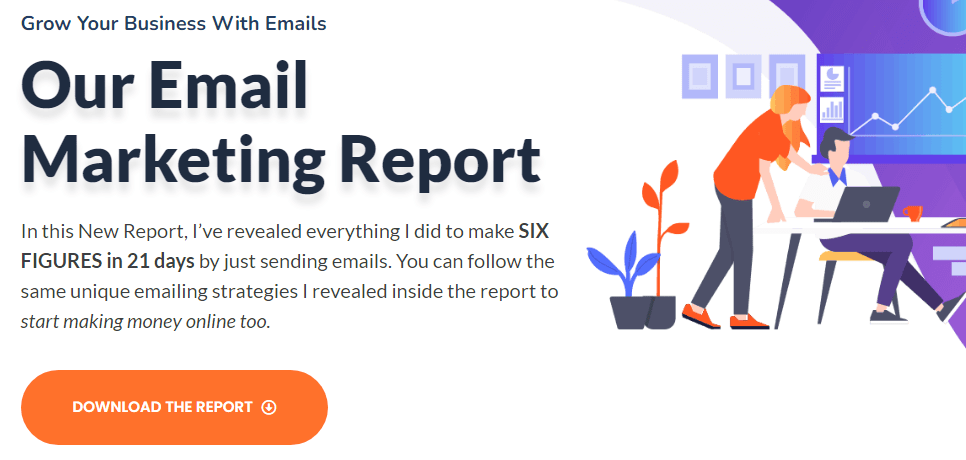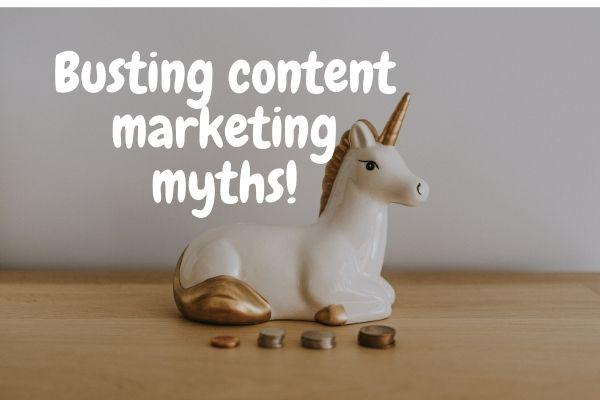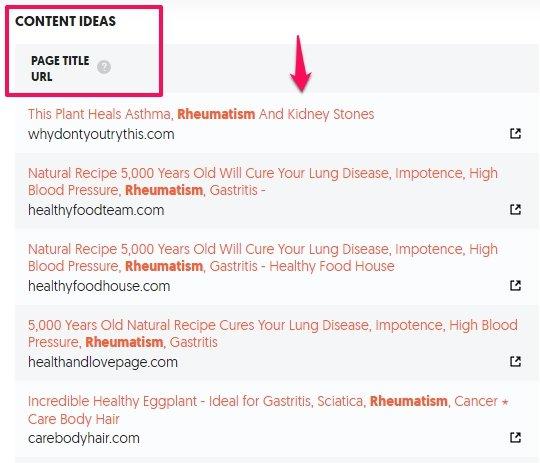It’s not about you. It’s about your customers. It’s not about producing the content you want. It’s about using content marketing to nurture a warm relationship with your audience. How to create compelling content tells you how to do just that.
Forget everything you know about marketing. Leave those college marketing books where they belong – on the shelf, and listen.
The marketing-scape (from landscape) is changing. The rules of the game are being thrown off from the window.
If you play by the old rules, your business will suffer. Your customers will go to your competitions. And you’ll pack up and close the shop.
Want to Grow Your Real Estate Business? Download the Complete Grant & Funding eBook for instant access to grants, guides, and more. 80+ Grant and Scholarship Opportunities (FG, State-by-State, General & Underrepresented Groups Scholarships, Plus Grant Writing Checklist). 900+ Copies Sold Already. Get Your Copy Now
You don’t want that, do you?
Here’s what is happening. Your customers are in charge now. They want to be pampered. They want you to woo them. They want to feel like they matter.
And you must, for your own survival and to get their business, obey them. Anything short of this, is disastrous.
The problem, however, is, how on God’s green earth are you going to do that?
I have a little secret for you – CONTENT.
Yes, the answer lies in the type of content you produce.
You see, most times, the content you put out tells a lot about your business. Your customers can, at a glance, tell whether you care about them. They can tell whether you know what you are doing.
The long and short of it is – the content you publish can paint your business in good light or it can discourage prospective customers from working with you – even if you know what you’re doing.
Creating quality content is one of the most effective ways of marketing your business to your target audience. Compelling content should be entertaining, challenging, exciting, and valuable.
And if you’re wondering what the hype is all about, just know that your competitors are utilizing the power of effective content marketing to reach their goals.
Plus, search engines love quality, engaging, and helpful content. They will reward you by ranking your webpages higher on their search results which will, in turn, get you substantial, high-quality organic traffic.
Remember, the most important thing is ‘publishing compelling content’ your customers and search engines love.
However, before we dive into how to create ridiculously compelling content your customers will love, let’s first answer the question; what is content.
Recommended For You: How We Made Six Figures In 21 days Just Sending Emails

What is Content?
Content – in web marketing – refers to a piece of information that is accessible electronically. As a rule, good content should be interesting, entertaining, challenging, and worthwhile. (Source)
If all the four elements that make up a good piece of information are missing, the writer has just succeeded in wasting her or his time.
The Difference between Content Creation, Content Curation, and Content Marketing
Content creation has to do with research as well as the production or making of different types of informative content that will attract a particular audience.
Content curation, on the other hand, is an essential part of content marketing. It involves acquiring great pieces that never got read and making them more accessible to targeted audiences while juicing the content with some of your own flavors.
Content marketing has to do with using the best online tools – e.g., social media platforms, etc. – to promote useful content to attract and retain customers.
The demand for valuable or useful content types in almost every industry is massive. However, producing the right content that stands out and gets noticed is not easy. The primary content marketing challenge right now is on how to produce or create engaging content that connects with both prospects and consumers.
Debunking Content Creation Myths

Content is about you or your organization
This is a trap that a lot of businesses with physical premises have fallen into almost as soon as they established their presence online.
What matters most, according to Bob Burg, author “It’s Not About You,” in your business is to have the mindset of your ideal customer and then get lost in their affairs.
The content types you plan to churn should not be about you or your organization. Granted, you may have to chip in some achievements made by your organization, but do not dwell on that.
Your editorial calendar must appeal to your target audience at all times. Make sure you write content that addresses their needs, helps them, and enhances their lives. These elements motivate them to share the content on their favorite social media networks.
So, content is not about you or your business enterprise: it is all about your target customer.
Content is meant to advertise
This is another lie that is peddled by so-called gurus online. Content is not always intended to advertise. Your content should not, in reality – be designed to sell products or services directly to the readers.
Yes, content may indeed be perceived as the new way of advertising, but your goal should be on how to create original and high-quality content that quickly interests, connects, and builds what is referred to as a “communication relationship” with your target customers. (Read more about communication relationships here)
Unless you are a direct response copywriter, you should know that content is not meant to sell directly to targeted customers.
Make sure you make plans for every type of content you want to put out there. Your #1 priority should be to provide usefulness and value in each blog post, article, infographic, visual content, and visual content that you create.
Bear this in mind: when a prospective customer finds satisfaction after going through your content, many good things are underway.
Content is only for generating leads
Well, this is somewhat true because the type of content you create should be targeted at eliminating doubt or fear. It should convince both prospects and customers of your authenticity and mission.
But then, the fact that your content is original or high quality does not necessarily mean it will generate targeted leads for your business – that’s just one part of the story. You still need to incorporate an effective marketing strategy to get your customers and prospects through the door.
Understanding your target audience is highly crucial as this will guide you on the type of content to create. Then, develop a strategy to promote and market the content on social media and other channels.
The bottom line is distribution and promotion are the other two legs in a three-prong content marketing strategy you need to succeed.
You Might Also Like: The Top 15 Small Business Challenges and How to Navigate Them

Six Reasons Supposedly Great Content Fail
Here are some reasons your content will fail.
Crappy Headline
No matter how great your content is, if it is hidden behind a bad headline, it will remain hidden. No one will read it.
Your headline is the potential reader’s first impression (remember what they said about first impressions?) of the content.
If the headline of your content is not enticing, no one will read it. And that would defeat the purpose of creating the content in the first place.
So, make your headline pop. Make it jump out. Grab the reader by the scruff with your headline.
Topic not targeted enough
Wrong topics have also contributed to the failure of world-class content. If your topic is not targeted at the right audience, it will go unread as your target audience won’t find it interesting enough to read.
Lack of thoroughness (i.e., attention to detail)
Simple details like grammar and spelling can ruin otherwise great content. It is vital for you to pay close attention to these little details so that your target audience doesn’t get turned off as they go through your content.
Not promoted enough
Promoting your content is a vital strategy that any content marketer should not take for granted. If you don’t promote it so that your target audience gets to know about your new content, no one will know it exists. Don’t be taken in by the fallacy that people will stumble across your content because it is excellent. They won’t, but if they do, how sure are you that they are your target customers?
Difficult to share with social networks
If your social media buttons are disabled, there is no way for readers to share your content with their friends on social media networks.
Successful content is content that readers share on their own without cajoling them. But if they can’t find the social media buttons, they will leave and probably not return.
Not optimized for search engines
Optimizing your content for search is one of the best methods of generating organic visibility. Since your potential customers are searching for information on Google and other search engines. Your content will not be found by anyone if it is not optimized for search engines.
The #1 Rule to Keep In Mind Before Creating Any Content
#1 Rule: Know your audience
This is the cardinal rule of every content producer; you must have a detailed illustration or picture of your target audience before you sit down to create the content. Knowing your audience begins with asking questions such as:
a. Who is your target audience?
b. Can you identify their most significant needs or pain points?
c. What is their age bracket?
d. What about their educational backgrounds, income status, etc.?
These questions will help you to develop what is known as a buyer persona. This is what you will follow the next time you create content. This is because it is one of the fundamental factors of success in marketing and as a content creator.
You can also use custom AI work models from brands like AI Work to collect and analyze customer insights, helping you build accurate buyer personas and refine your content strategy accordingly.
You may also like: 7 Steps to Understand Your Ideal Market
Target Audience Research Tools: Use these tools to understand what customers are searching for
Do you know that there are some free tools out there that you can take advantage of? These tools will churn out keywords you can target and create content around so that more traffic can visit your site.
Here are some of the best tools out there to use for your keyword research:
Ubersuggest
Visit Ubersuggest.com and type in your seed keyword, for example, rheumatism. Then, use the Keyword ideas tab to discover several search phrases to target with your content.

The rule of thumb is to select keywords that ask some of the pressing questions your customers have. One quick way to identify your customers’ questions is to look at the search volume.
Higher search volume implies more people are looking for answers and solutions to with particular query.
The next thing is to check the type of content out there that is already answering those questions. Use the Content idea table to do this. With your keyword ready and a sense of the type of content your customers are looking for, it is time to start creating yours.

Google Keyword Planner tool
Type in your seed keyword and then scroll down until you see the button “Get Ideas.” Click on the button and wait for the tool to do its thing.
Next, click on the “Keyword Ideas” tab to look at the suggested keywords.
Select a keyword that has an average monthly search volume of about 1,500 and above searches.
Copy the keyword and use it to generate several long-tail keywords, making your website’s ranking easier. Just make sure your content is in-depth and highly informative.
Recommended For You: Steady Streams Of Organic Leads to Grow Your Business this New Year

Five Steps to a Compelling and Original Content Your Customers Will Love
Step 1: Brainstorm topics and ideas
You need to creatively find the best conclusion to a particular challenge or problem. That is what happens when you brainstorm: switching different light bulbs on so that you can pick out the one that shines the brightest.
Although brainstorming is more effective when carried out in a group of two or more persons, you can readily adopt it as well if you are a solo content producer or marketer. It’s all about generating the right ideas that will help to solve problems.
You can follow these actionable tips below:
Define the objective
What do you hope to achieve with your content type: to generate traffic, attract targeted or qualified leads, or for sharing on social media platforms? As soon as you define your objective, your creative juices will start flowing, and powerful ideas will come to you.
Set a deadline for brainstorming ideas
If you have a team with which you brainstorm content creation or marketing ideas, you must set limits to each idea section. When you do this, you and your group will develop ideas faster, and time disciplines will energize you to think creatively.
For instance, you can set four minutes for brainstorming article headlines with user-oriented benefits, set another ten minutes for how the entire piece will be crafted to connect with your target audience, etc.
Write down each idea as it flows to you. It is a brainstorming session, so don’t go off on a tangent by thinking about the body of the content itself.
Improve on the ideas
This is where you work on improving the ideas you have generated in the previous sub-section. You can either add something new to the existing ideas or rewrite them to suit your audience.
Evaluate the after-effects
This involves analyzing the secondary responses to a particular idea which is – often – a direct result of the initial reaction to that idea.
As a content creator, you need to bear in mind that the plan or foundation will determine whether your content goes viral.
Take advantage of survey tools or network to source facts and data which are not accessible for free along with public APIs.
Focus on some of the ideas
The next thing you should do is rank those ideas you have generated according to the order of their importance. Prioritize each key point of the ideas you brainstormed.
Resolve to take action
Then launch out into the deep, literally. Get started as soon as possible and more ideas or hidden gems will be uncovered. Don’t waste your time waiting for a “heavenly” idea; start with what you have and go on from there.
Control and follow-up monitoring
One of the ways to control your business effectively is to delegate and provide guidelines for others who will create content types for you. Delegate content, even if you feel that “now” is not the right time to do so.
This tip is mainly for content creators who have a team to help them out, although as a solo content creator, you should be able to monitor your own successes and failures.
Always put yourself in your customer’s shoes
Your customers are also targeted by your competitors and – in most cases – don’t know what to do when presented with several options.
But when you put yourself in their shoes, you will be able to “get into their heads” and craft out content that will connect powerfully with them. This is how you create better customer service than your competitors while retaining your customers’ loyalty for life.
Step 2: Long-Tail keyword research
If you cannot create a lot of valuable, original, and high-quality content for search users, getting found at the top results on Google and other top search engines may be a pipe dream.
Learn more about long-tail keyword research here.
Step 3: Write eye-catching Headlines
The reader usually starts at the headline. Pro. copywriters agree that following the 50/50 rule of headlines help you craft attention-grabbing headlines. (source)
The 50/50 rule of headlines states that you should spend at least half the time spent on writing content on the headline alone. If you want your content to stand out of the 294 billion per day emails sent to consumers and more than 2 million blog posts published daily, your headline needs to leap out and grab the reader by the throat, literally.
Be warned though, don’t write pushy headlines to entice your readers. It would be counterproductive in the long run.
Eight out of ten individuals will read your headlines, but only two will read your content to the end and share it with friends on social media.
It is hard to tell the headline style that works best. But data obtained from A-list content creators, marketers, and bloggers who have achieved great success with their content shows the following:
• Topics with “top tips…” in the headline garnered more than 100,000 visits of free search engine traffic to Michael Dunlop’s posts. (Source)
• Headlines with numbers in them garnered more engagement – up to 36% more – according to Unbounce
• Question-based headlines also work well, according to Upworthy, which generates more than 88 million visitors monthly. (Source)
• Case study headlines
Step 4: Outsource content creation with an objective in mind
Did you know that the global outsourcing of services skyrocketed from $87.5 billion in 2008 to $104.6 billion in 2014, according to Statistica?.
Hiring outside help to handle your content creation will help you to focus on more important aspects of your business, thereby helping you to increase your profits.
You may also like: 9 Powerful Reseaons to Hire a Content Creator for Your Small Business
Where You can Hire Content Writers?
• Hire Us
Problogger Job Board
• Fiverr
Step 5: Promote your content
Promotion is a crucial part of content marketing; without it, no one will know that your content exists. Since the primary goal of 25% of CEOs is to attract the right type of customers with every piece of content they churn out, you need to lean your weight on promotion strategies to get the results you seek.
You can promote your content by doing the following:
• Engage in blog outreach, which entails reaching out to bloggers with massive followers within your industry and striking a relationship with them. This should lead to your content being read, cited, and shared with prospects, customers, and other readers.
• Get in touch with influencers in your industry – influencers also have massive followers, and if you can get into their good books, they can help you to endorse and share your content to their followers
• Social media networks have come to stay, and there is a good chance that your target audiences also use these platforms. Craft shareable content on your fan pages and link the concluding part to your blog or website. Encourage your readers to share the content with their friends and family.
• Ads – You can promote your content by running Facebook ads, Instagram ads, Twitter ads, Google ads, and Bing Ads. Each of these ads should be targeted to specific audiences that matter within your industry. You will be amazed at the reach and the feedback you will get.
Although you may spend some money running these ads, it will pay off in the long run.
Start creating compelling content today
Well, there you have it: the authoritative guide on how to create compelling content your customers will love.
Creating informative content is an art that many online marketers take for granted. By following the steps discussed above, you can start cranking out compelling content that your readers are always looking forward to. They will also be more than willing to share your content with their friends on social media networks.
And don’t forget to optimize your web design for mobile devices, as most of your customers will read your content on their smart devices.
Recommended For You: Free Business Templates to Streamline Your Workflow this New Year

Hand-Picked For You:
- FAQs: How to Start a Business In 2023
- FAQs: How to Grow Your Business In 2023
- FAQs: How to Fund Your Business In 2023

